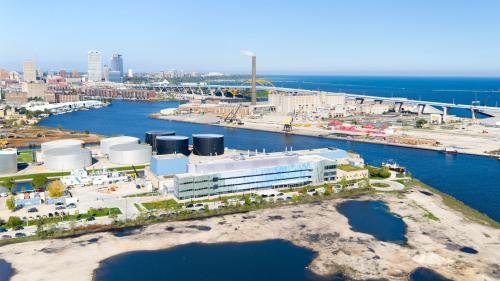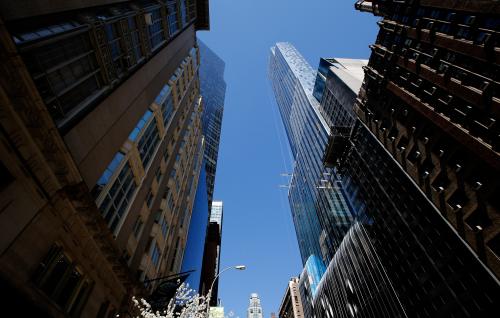“If you want to be an optimist, stand on your head. The world looks a lot better from the bottom up than it does from the top down.”
In that phrase, said at a recent Brookings event, Tom Friedman succinctly captures the nature of American democracy and governance in the 21st century. As Friedman and I discussed (video below) – and as he details in his latest book, Thank You for Being Late – we are living in an age of accelerations: Massive shifts in technology, globalization, and climate change are fundamentally reshaping our politics, our workplaces, our communities, and our ethics. Success in this age, Friedman argues, depends on our ability to adapt.
Friedman concludes that local communities are the scale of governance best suited to meet the challenges of our era. My experience working with local leaders across the country bears that out.
This election cycle made clear that our institutions must adapt to better address concerns surrounding these accelerations. Research by David Autor and others quantifies the pain that globalization has brought to workers and communities reliant on manufacturing industries. My colleagues’ research suggests that ride-sharing technologies are beginning to displace payroll workers in some cities while other emerging technologies, like driverless vehicles and drone deliveries, have the potential to shrink city revenues and disrupt local air and street traffic patterns. Innovation and economic activity are clustering in select cities, while other communities struggle to create and retain talent and jobs. And our country’s “diversity explosion” has led to rising concerns among American households of every ethnicity about their place in the American dream.
While we need our federal leaders to grapple with these new realities head-on, the likelihood of transformative adaptation at that level is slim. As Friedman writes,
“We need to reverse the centralization of power that we’ve seen over the past century in favor of decentralization. The national government has grown so big bureaucratically that it is way too slow to keep up with the change in the pace of change. Meanwhile, states and many localities have grown more flexible and capable – living on the edge of the iceberg, they feel every change in temperature and wind first; they need to react quickly, and now they can.”
Indeed, our cities and metro areas have demonstrated their ability to step up. Local leaders in Minneapolis-Saint Paul often joke, “We’re not only the land of 10,000 lakes. We’re also the land of 10,000 initiatives.” This may seem like good-natured Midwestern humility, but it illustrates the region’s creative energy and problem-solving nature. Communities within the Twin Cities, including in Friedman’s hometown of St. Louis Park, are leading efforts to address racial disparities in schools, work, and housing; close the skills gap and meet the needs of employers; and put in place the infrastructure that connects people to each other, to jobs, and to opportunities across the globe.
There are many other examples of state and local adaptation. To ensure manufacturing remains competitive, Michigan, South Carolina, and regions like Lexington-Louisville KY have launched apprenticeship programs. In Detroit, philanthropic, business, and public sector leaders have come together to make unprecedented, collaborative investments to reduce blight, spur minority entrepreneurship, and open up opportunities in emerging industries such as financial technology.
Cities and metro areas are in the business of “applied hope,” as Tom Friedman observes. They do not operate with extreme pessimism or partisanship but simply strive to make progress…together. The path is often complicated. We still need more strategies and organizations to adapt their efforts for additional disruptions ahead. Yet efforts in cities across the country suggest that local leaders are capable of keeping up with change. The future, seen from the bottom-up, is bright.
The Brookings Institution is committed to quality, independence, and impact.
We are supported by a diverse array of funders. In line with our values and policies, each Brookings publication represents the sole views of its author(s).







Commentary
Why cities matter in an age of accelerations
December 22, 2016